In August, my wife and I spent two weeks in Ireland, where we joined a bike tour through the region on the west coast known as Connemara. As with many things in Ireland, nobody agrees on the exact boundaries of this area, so let’s just say it includes much of the coastal parts of counties Galway and Mayo. Most of Connemara is a succession of peninsulas that jut into the Atlantic Ocean, and everywhere the land is hilly or mountainous. It often strikes the visitor as inhospitable, depopulated, and bleak. I have an Insight Guide from the early 1990s that I spend a little time with whenever I visit Ireland, and the book captures this aspect perfectly: “Connemara is one of the most beautiful regions in Ireland and also one of the most barren. To travel through it is to understand why so many of its people are to be found in Boston, Birmingham, and London.”
Our tour started in Galway and ended—a day early, thanks to the weather—on Achill Island. It would be tedious to describe the whole itinerary, so I’ll focus on three moments or scenes to try and convey a sense of what it was like at its best.
Over the past 20 years, Galway city has converted itself from a cultured if somewhat sleepy provincial capital into a tourist hub for exploring its own hinterland, sending gigantic tour buses into the farthest reaches of counties Galway, Clare, and Mayo. The most remarkable thing about the city to me was the incredible number of bed-and-breakfasts it contained and that every single one was filled to capacity. We were fortunate to have a room at The Stop, on Father Griffin Rd, where our host, Russell Hart, would sit with us after breakfast and offer his recommendations.
“You’re here for the weekend,” he said, “so you have to see the Saturday market. It’s not to be missed.” Since Karen and I love a good market, we were happy to take Russell at his word. Not long after we turned onto Church Yard Street near the center of town, we came upon a busker, who sat with guitar and terrier outside Sheridans Cheesemongers.
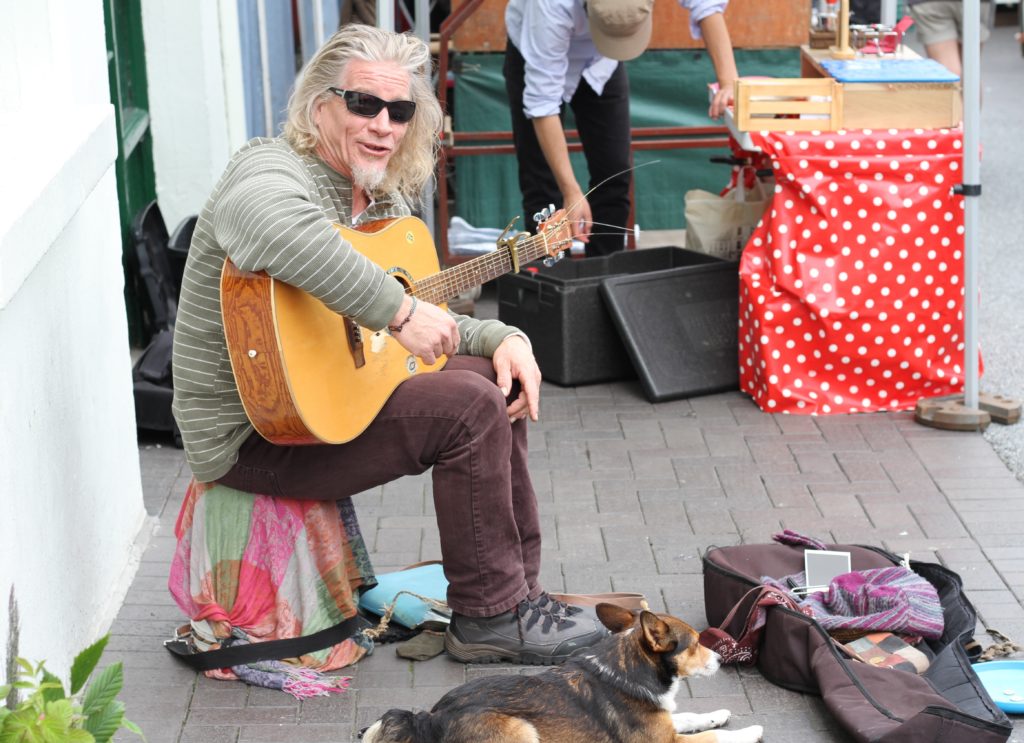
He sang in a fine, gravelly baritone, and as we came up, he started into a medley from the Wizard of Oz: “If I only Had a Heart, a Brain, Courage,” etc. While he sang, his dog picked up a frisbee in its mouth and collected change from the passers-by, then returned to its place on the pavement and went to sleep. Me, I was transported. The hordes of tourists from every corner of the globe faded away, the preoccupation with seeing many sights began to dissipate, and a feeling of peace and sufficiency took hold. Part of the charm of the experience was in its unexpectedness, but isn’t there always an element of surprise in a good performance? Later, as the bike trip unfolded, we sought out music in several pubs along the way, but this was the best we heard, right at the beginning, on the street, and in a rain so fine it resembled an invisible mist.
We spent our second night of the bike tour in Leenane, a village at the east end of Killary Harbour, and an access point to the Delphi Valley, which we would cycle through the following morning. Leenane provides as good an introduction as anywhere to the geography of this part of Connemara, to the loughs and river valleys surrounded by mountains with steep, barren slopes that always seem to take on a bluish-green sheen at a distance.
We stayed at the Leenane Hotel, the only inn in the village. A marvelous place, slightly ramshackle in the best sense of the term, and with comfortable, idiosyncratic rooms, by which I mean, each one was different from all the others. A huge parlor on the ground floor with leather armchairs and studded tables, where we could enjoy a drink and unwind before dinner. The hotel was such a wonderful residence that I was surprised to discover it looked even finer from a distance. To contemplate the old whitewashed building in the morning light and from across the lough was to realize that we’d come to a place where the scale of our enjoyment was dwarfed by our surroundings.
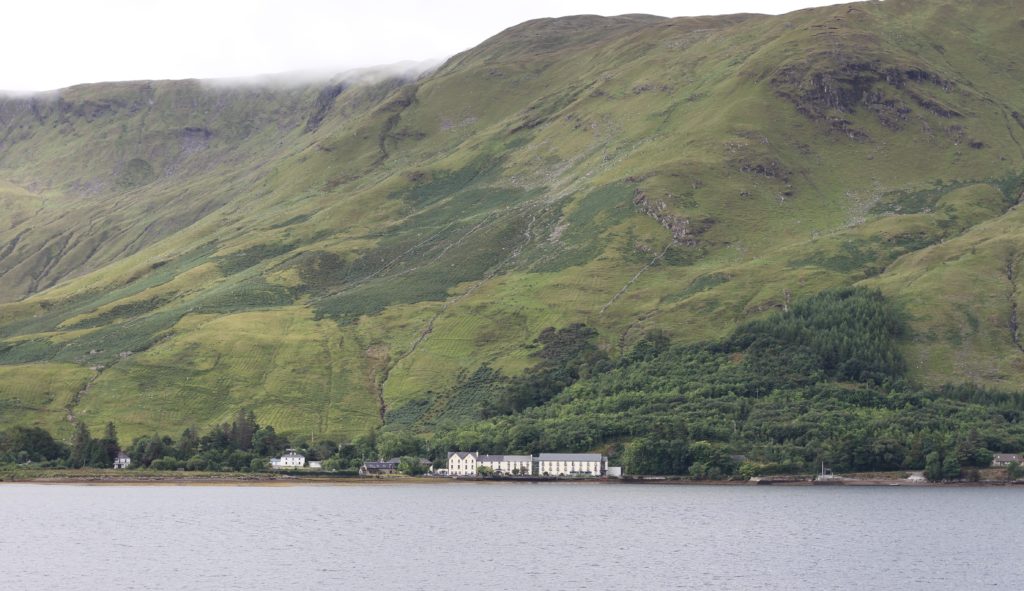
On leaving Leenane, we cycled across the bridge at the end of the lough and down the other side on the R335, which took us north to Delphi. Past Delphi, we went beside two loughs in succession and entered the Dhulough Pass between the mountains. The countryside here is so stunning and so empty of human habitation that I began to realize I was proceeding without any points of reference. I’d never seen anything to compare with this, and for that reason, I stopped thinking at all and simply immersed myself in the experience. Maybe this is the whole point of travelling, the target we secretly aim at when taking a vacation, which in its root sense has nothing to do with getting away but with emptying out.
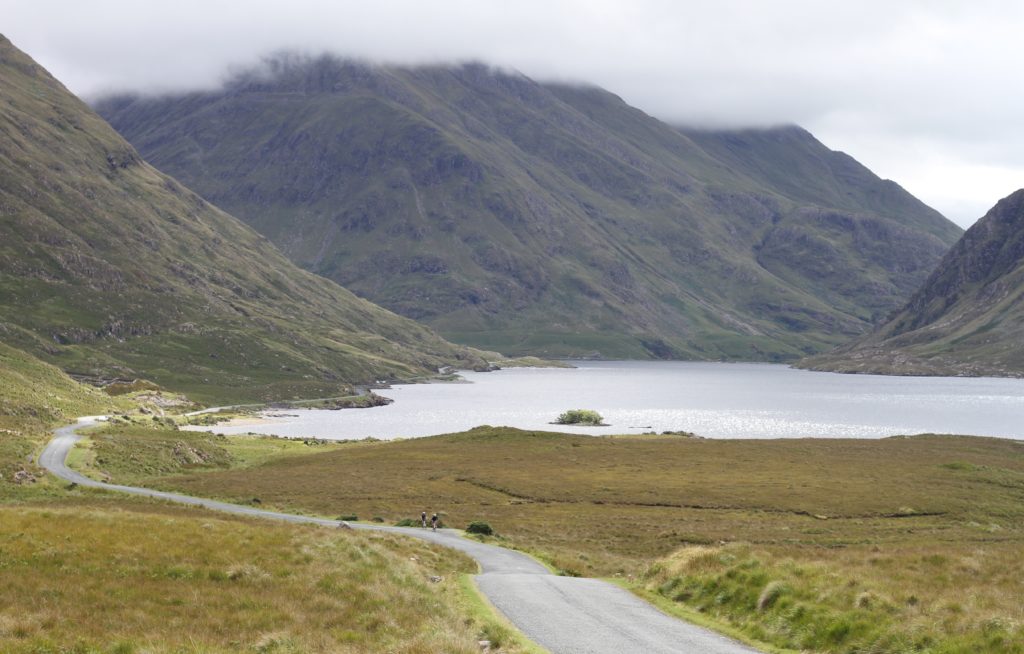
In the middle of the bike tour, we had a rest day in Westport, which meant we could do whatever we wanted. This was fortunate, because Westport is only a 15-minute ride from Murrisk, the village at the base of Croagh Patrick, often referred to as “Ireland’s holiest mountain.” I’d been wanting to walk up the mountain—where St Patrick fasted for forty days and forty nights in the middle of the sixth century—for so long that I forget what first piqued my interest. But the strength of the desire only increased over time, and this was the only chance I would ever get to do it.
We’d talked with a young bartender in Galway who’d scaled Croagh Patrick a few weeks before on a glorious, sunny afternoon. He showed us photos on his phone. The views over Clew Bay were magnificent; any of his pictures could have been pasted onto a postcard or stuck inside a tourist brochure to fire enthusiasm for the idyllic beauty of the scene.
Conditions on the day we chose to go up were truly miserable: cold and rainy, with a stiff west wind blowing off the bay. By the time we’d cycled from Westport to Murrisk, we were already soaked to the skin. “Let’s get a coffee and warm up,” said Karen.
We went inside the Visitor Centre, and I ordered two coffees while she found an empty table. A woman in her forties was standing by the counter holding a gnarled walking stick.
“Where’d you get that?” I asked.
“Ah, I’ve had it for years,” she said. “But the man in the food truck outside rents them for a few euro.”
She had the severe, humorless demeanor of an ex-nun.
“Well, we’re going to have a coffee and think about it.”
“Oh, you can’t back out now,” she told me. Before I could reply, she walked out of the room and started her ascent.
We lingered over the coffee, then got the sticks and walked to the base of the mountain. The first thing you see is a big white-plaster statue of St Patrick with one hand raised in benediction. Behind him, the wide pathway sweeps up the bottom slope of the mountain. Everything beyond about 200 meters was wrapped in a mist so thick that even the blowing wind failed to disperse it.
The climb is divided into three parts: the base, which starts at a gentle incline but includes a number of tougher sections; the shoulder, which is relatively flat and short; and the final ascent, which is so steep and sketchy that you have to do parts of it on hands and knees. The question for me was whether my heart would hold out over the course of the climb, since I’d had valve-replacement surgery a little less than a year before. All went well for the first two sections, and it was only during the last part that I began to wonder if I could make it to the top. But this was also where we ran into several people coming down from the peak who all offered encouragement. “You’ve only got another 20 minutes.” “Another ten!” “You’re almost there.”
I stopped looking up to try and see the peak and simply stared at the rocks before my feet. When I thought I couldn’t go any farther, I’d have a drink of water. The higher we went, the harder the wind blew, until it achieved the power of a gale. Karen made it up first, and I followed about ten minutes later. When I finally reached the flat space at the top of the mountain, I was too exhausted to say anything. We gave each other a silent high-five, then walked over and sheltered from the wind against the face of a small, white-washed chapel.
The woman I’d seen in the Visitor Centre was standing there eating an apple. When she finished, she put the core in a plastic bag and the bag in her pocket. Then she gave me a sidelong look.
“So,” she said. “You made it.”
“Yes.” Then after I caught my breath, “Christ almighty.”
She grimaced, took up her stick, walked to the edge of the peak, and started back down. Mon ange gardien du jour.
Back in Westport, one person after another asked if I’d had any sort of spiritual revelation when I got to the top of Croagh Patrick. Oddly enough, I’d fielded the same question—about revelations—after heart surgery the year before. In both cases, the effort required—in one to climb, in the other to recover—was so intense and painful that it pushed all spiritual concerns off to the side, at least for the time being.
I thought of what Thoreau said after almost scaling Mount Katahdin in Maine, that the significance of the achievement isn’t always apparent at the time, but only reveals itself later. In other words, the faculty by which we create meaning out of our experience is the memory, not the mind. “It is after we get home,” he wrote in his Journal, “that we really go over the mountain, if ever.”
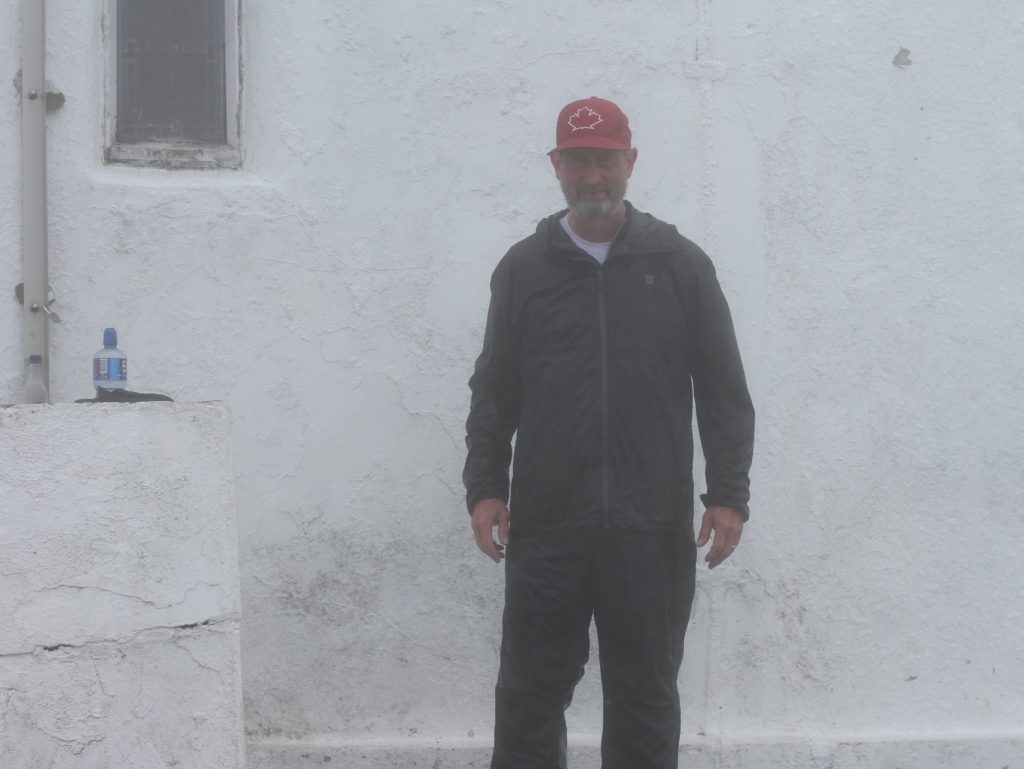
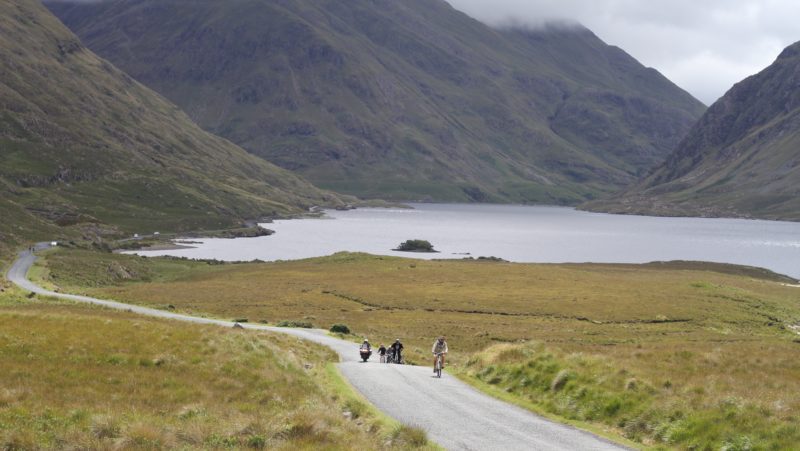
I read your travel log as soon as I saw it in my in basket. Thank you for sharing some of the highlights of your trip.
I would have responded right away but I hesitated in the presence of your eloquent writing. And then I thought, what the hell, I wanted to tell you that I got a lot of vicarious pleasure reading it.
Way to thumb your nose at the medical concerns you might have had and experience your trip to the fullest. You were an intrepid traveller and a model for us all.
I especially enjoyed following in the steps of St.Patrick. I have never asked how religious you are but I abandoned my Catholicism a very long time ago. But I, too, would have felt compelled to climb that mountain. What I think matters when you travel is to find what matters to the people who live there and try to experience that. And that you did so well!
Regards
Norma
Hi Norma, and thanks very much for your kind comments. I’m so glad you enjoyed the post.
Best,
Ed